Rome, Temple of Portunus
Q849241Temple of Portunus: one of the temple of Rome's Forum Boarium.
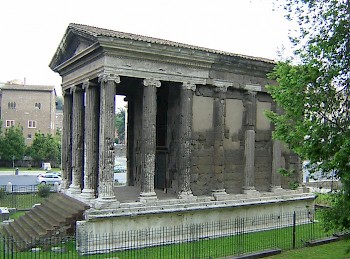
The Temple of Portunus, the god of the river port, is one of the two temples on the Forum Boarium ("cattle market") that have survived to the present day. Being a port temple, it was of course close to the river, which became, close to the sanctuary, poorly navigable for great ships. As a consequence, it could be bridged: the Pons Aemilius (now called Ponte Rotto).
The street that connected the Forum Boarium to the bridge passed in front of this temple and was called Vicus Lucceius (today Via di Ponte Rotto). Nowadays, the close connection between the temple and the water is hard to imagine, because after the flood of 1870, high dikes were constructed to regulate the Tiber. However, we can be certain that this temple once faced the incoming ships.
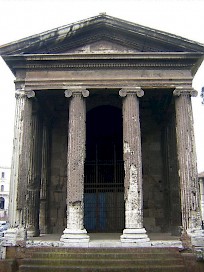
In the first century CE, the river port silted up and was abandoned. When the present building of the Anagrafe was constructed, the remains of buildings from the age of the emperor Trajan were found, which had been built on the site of the ancient port.
Until the discovery of the old river port, the function of the square temple on the Forum Boarium was unknown, and it was sometimes - but incorrectly - called "Temple of Fortuna Virilis". That it was the temple of Portunus is again guesswork, but at least it's a guess based on knowledge of the actual surroundings of the monument.
The present shape of the temple dates back to the early second century BCE, but there were later restorations. It is erected from tuff from the valley of the river Anio. The terrace was exceptionally high (a part is now hidden under the ground) because it was so close to the river. The sanctuary was built on the site of an older temple, which seems to date back to the third or even to the fourth century BCE.
The temple was what modern specialists call a pseudoperipteros temple with six Ionic columns in front. This was a common type of temple in the Latin part of the Roman world, although examples are known from the east as well (e.g., the Temple of the Muses in Baalbek).
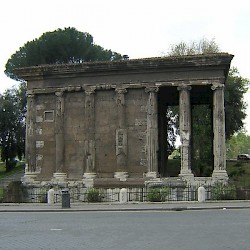 Rome, Temple of Portunus, seen from the east |
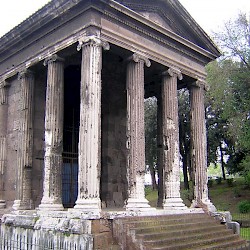 Rome, Temple of Portunus, seen from the northeast |
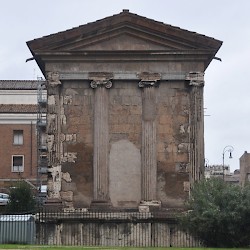 Rome, Temple of Portunus, seen from the south |
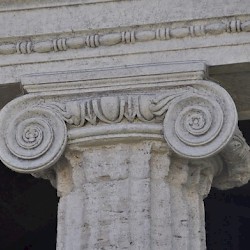 Rome, Temple of Portunus, Ionic capital |